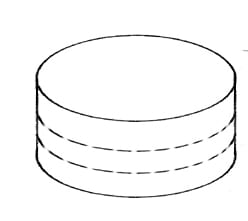A balanced view of radon
By Oli Usher, on 27 August 2015
Thin, fragile, light, and barely visible against the padding that keeps it intact, this object is nevertheless reflects an important period in the history of chemistry – a period in which UCL led the world.
Around the turn of the 20th century, UCL’s chemistry labs saw most of the key discoveries related to the noble gases. William Ramsay isolated helium and argon here in 1895, and went on to discover krypton, neon and xenon in 1898. Over the next few years, experiments at UCL proved that radon, discovered by Friedrich Dorn in Germany, also belonged to this group. (Ramsay won UCL’s first Nobel Prize for his work on these gases.)
The delicate quartz balance in the image above is one of the most important pieces of apparatus used in this research on radon. It was used by UCL chemist Robert Whytlaw-Gray to weigh a sample of radon and determine its density for the first time. A schematic of the balance is shown below:
The balance held a tiny sample of radon in the chamber on its right, and was balanced inside a vacuum flask with a weight attached to the balance’s other side. Despite the tiny quantity of gas involved, this was enough to determine radon’s properties.
It is held by UCL’s chemistry collections, along with other artifacts relating to this period in UCL’s history, including William Ramsay’s Nobel Prize medal and citation.
 Close
Close














